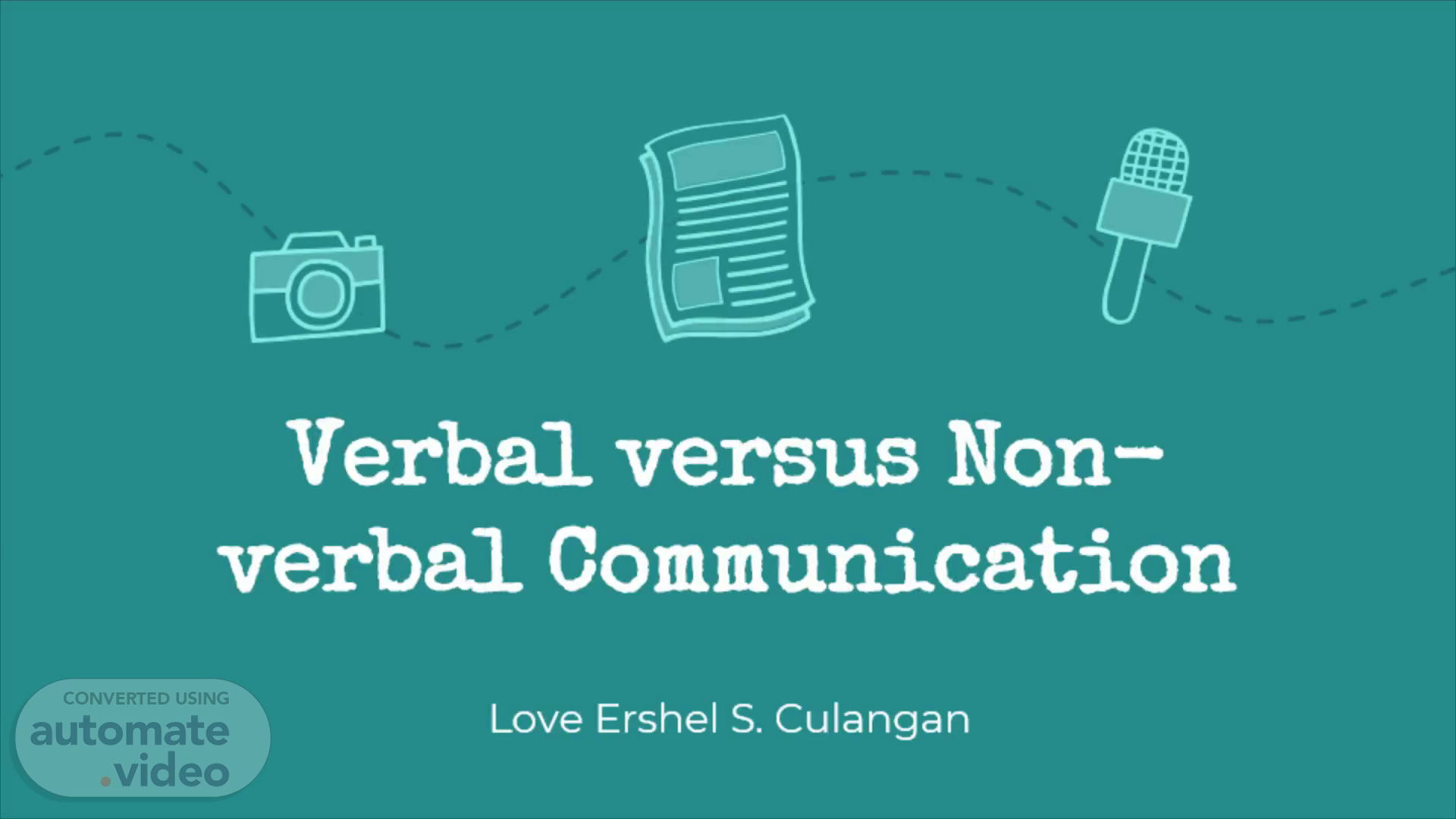
Page 1 (0s)
Verbal versus Non-verbal Communication. Love Ershel S. Culangan.
Page 2 (8s)
Introduction. Communication is the process of transferring message which happen with or without words. These are of two types: verbal and non-verbal..
Page 3 (24s)
Types of Communication. Non-Verbal. proxemics (distance), kinesics (body language), haptics (touches), appearance eye contact, etc..
Page 4 (58s)
What is Verbal communication? Verbal communication is auditory communication with words. It is mostly face-to-face or written with the use of language as a means. Nowadays, technologies like phone and internet have allowed oral communication to take place without being in the same place or writing..
Page 5 (1m 30s)
Here, tone and volume of the spoken words or sound matter the most along with the words. Similarly, detonation and connotation are other factors that sends intended meaning of message. So, choosing right words according to situations is important. Verbal communication might fail in inter-cultural situations due to meanings and symbols being different..
Page 6 (2m 5s)
What is Non-verbal communication?. Wordless communications fall under non-verbal communication . It is conveyed as visual cues. Body language, gestures, facial expressions, touch, etc. are few examples of non-verbal communication. It is noticed and interpreted more than words. It also communicates more messages. It is used to interpret whether verbal communication is true and authentic, or not. Non- verbal communication can be different according to place, culture and individual differences. There is no specific interpretation, rather the interpretations are open..
Page 7 (3m 4s)
Similarities between verbal and non-verbal communication.
Page 8 (4m 17s)
Discretion and Continuousness. Verbal communication has start point and stop points. Non-verbal communication keeps going on without interruptions. Even when alone, interpersonal processes keep occurring at individual level. Even after people stop talking, they keep showing non-verbal cues. For example, glares after a fight or smiles after something good. Chances of Miscommunication Each word in verbal communication has distinct meanings and has less chance of being misinterpreted. There are about 4000 distinct facial expressions that people can make with 20 muscles in the face. Along with that, there are so many other types of non-verbal communications . So, there is a greater chance of those signs that can be misinterpreted.
Page 9 (5m 26s)
Uses of Verbal and Non-verbal Communication The major use of verbal communication are to inform or impart knowledge, as words are very powerful. It can be used as a tool of persuasion. It is used to have debates, discuss and show creativity. It can also be used to establish relationships as words are used to express feelings. It is needed for social situations. Whereas, non-verbal communication like touch and eye contact express closeness and emotions. For example: Holding hands can express love better than words like “love you”. The 5 major uses of non-verbal communication are modifying speech, replacing speech, controlling communication, conveying personality and expressing emotions. It also helps in maintaining interpersonal relationships, supporting verbal communication and perform. So, we can say verbal and non-verbal communication does not always have to be different. It also has many similarities and goes hand in hand..
Page 10 (6m 49s)
Thanks. Do you have any questions?.